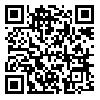Volume 5, Issue 1 (Occupational Medicine Quarterly Journal 2013)
tkj 2013, 5(1): 72-82 |
Back to browse issues page
Download citation:
BibTeX | RIS | EndNote | Medlars | ProCite | Reference Manager | RefWorks
Send citation to:



BibTeX | RIS | EndNote | Medlars | ProCite | Reference Manager | RefWorks
Send citation to:
Mehrparvar A H, Mostaghaci M, Davari M H, Bahaloo M, Hashemi S H. A Brief History of Occupational Medicine. tkj 2013; 5 (1) :72-82
URL: http://tkj.ssu.ac.ir/article-1-325-en.html
URL: http://tkj.ssu.ac.ir/article-1-325-en.html
Amir Houshang Mehrparvar 
 , Mehrdad Mostaghaci
, Mehrdad Mostaghaci 
 , Mohammad Hossein Davari *
, Mohammad Hossein Davari * 
 , Maryam Bahaloo
, Maryam Bahaloo 
 , Seyed Hesam Hashemi
, Seyed Hesam Hashemi 


 , Mehrdad Mostaghaci
, Mehrdad Mostaghaci 
 , Mohammad Hossein Davari *
, Mohammad Hossein Davari * 
 , Maryam Bahaloo
, Maryam Bahaloo 
 , Seyed Hesam Hashemi
, Seyed Hesam Hashemi 

, drmhdavari@gmail.com
Abstract: (9389 Views)
Background: Provide a review of occupational medicine history in world and Iran
Methods: Many books, papers and sites on the occupational medicine history were reviewed.
Results: Occupational medicine have been shaped by the forces that shape work itself, social evolution, changing modes of production, shifting economic powers, and demographic changes in the workforce. Hippocrates emphasized the relation between environment and health, although he has less to say about the non-military work environment. The impact of work on health could be traced to the Edwin Smith Surgical Papyrus, written approximately 1700 BC.
The earliest occupational physicians served military forces, and Galen was physician to Roman gladiators. Finger and wrist guards worn by Bronze Age archers represent early Personal Protective Equipment (PPE). Writers mention diseases and hazards of miners, and Pliny (1st century AD) mentions veils to cover the face. Paracelsus and Agricola were prominent, figures in the 15th century, with an emphasis on mining and health. Ramazzini's (c1700) work was widely translated in ensuing decades and is now well-known to all.
In Iran, Rhazes included occupation in his case studies (9th century). Many other men like Avicenna, Jorjani, and others conducted many works and wrote many books about occupational and environmental medicine. The emergence of a public health movement in the mid-1800s focused attention on the abominable conditions of many factories and on the living conditions, poor nutrition, high stress, poverty and ill health of the new factory working class, while paying scant attention to specific workplace hazards.
Type of Study: Review Article |
Subject:
occupational medicine
Received: 2013/06/26 | Accepted: 2013/12/14 | Published: 2013/12/14
Received: 2013/06/26 | Accepted: 2013/12/14 | Published: 2013/12/14
Send email to the article author
| Rights and permissions | |
 |
This work is licensed under a Creative Commons Attribution-NonCommercial 4.0 International License. |



